The previous post covered the origins of the Largo Field Naturalists' Society and the role of seedsman, florist and fruiterer Charles Howie in its establishment. The first decade of the Society's existence was focussed on monthly meetings, regular "conversaziones" and, most importantly, its annual horticultural fete. Contributors to these floral gatherings included several head gardeners, such as Largo House's Colin McTaggart, Robert Adamson of Balcarres, Mr Hunter from Charleton and Mr Christie of Kilconquhar House. The early horticultural fetes were held in Keil's Den (pictured above). The excerpt below from the 20 August 1863 Fifeshire Journal describes how people arrived by train in 1863 and were transferred by carriage to the entrance. Visitors enjoyed the "green slopes of the Keil" as well as the "shade of its lofty trees passing along its winding walks".
The inaugural event left the Society with a surplus of funds, which they used to form a "cottage and garden section". The intention of this was encourage local people to take pride in their outside spaces by awarding prizes for the produce of cottage gardens. Over the next decade, this section of the fete thrived and became the leading feature of the annual event. A substantial prize fund distributed among winners and special prizes and medals were donated by such individuals as retailer Charles Jenner and Glasgow goldsmith James Mark, who were among the 60 strong membership of the Society. In 1872, a complimentary dinner was laid on for Charles Howie in recognition of his hard work on behalf of the Largo Field Naturalists. The description below from the 22 March East of Fife Record mentions that a photograph of the five original members (Charles Howie, Benjamin Philp, William Wood, Robert Adamson and James Bardner) hung on the wall at the dinner.
By 1874, many were looking for change in the format of the annual fete. Community support waned, with some finding the management of the show too strictly regulated. Others complained about the effort involved in carting flowers, etc to Keil's Den. Income generated by the 1874 fete failed to meet expenditure, leaving the Society to meet the shortfall. By the following year a new Society had been formed - Largo Horticultural Society. Made up from a mix of old faces from the Field Naturalists and new blood, the Horticultural Society sought to bring the annual show in line with the wishes of the people. The 1875 show was held in front of Largo House for the first time. John Jeffrey, the linen manufacturer was the long term tenant of Largo House. A keen naturalist himself, Jeffrey went on to compile the 1879 book "The Trees and Shrubs of Fife and Kinross" with Charles Howie.
The marquee at the revamped fete in 1875 was visited by upwards of 1000 visitors per day, generating a good nest egg for the following year. Largo Horticultural Society (later Largo and Newburn Horticultural Society) continued to successfully run the annual fete every year for decades (in fact the Society still exists today and regularly puts on flower shows and plant sales). The venue for the annual show varied over the years, even returning to Keil's Den on occasion. As Lundin Links developed, the show moved there. The advert below is for the 1898 show held in Homelands Park. This was the first of many shows held in Lundin Links, much to the indignation of the traditionalists of Upper Largo. Sport became a popular addition to the show and over the years this included races, tug of war, treasure hunts, 'pillow fights', the 'slow cycle race' and the mind-boggling 'musical chairs on cycles'!
While the Horticultural Society had its fun, the Largo Field Naturalists' Society continued its more academic pursuits. After 16 years in existence, the opportunity arose for the field naturalists to acquire the Old Parish School on Upper Largo's North Feus. This was vacated in 1879, with the completion of the new Kirkton School. In fact, it was Charles Howie who purchased the old school building - see 1885 valuation roll extract below. This afforded the Society a proper space in which to display the objects collected over the years and also the potential to expand their collection. The aim was now to build up a collection "illustrative of the Natural History and Archaeology of the county" at the Museum. A plan was also made to turn the garden area into a miniature Botanic Garden.
Following a refit, the opening of the museum was marked by a Loan Exhibition (advertised below). On display on two tables in the centre of the hall was a large collection of the flora of Japan, courtesy of Mr Charles Jenner of Edinburgh, who was present at the opening. Also on display were many flora of Fife, dried seaweeds, numerous cases of butterflies, fossils, crystalized rocks, shells, buffalo and tiger skins, a gold nugget and carved models in parrot coal. A star attraction was a flip can used by Alexander Selkirk while exiled on the Island of Juan Fernandez.
Mr Gilmour of Montrave had loaned many items from Canada including stuffed seals, beavers, lynx and badgers as well as woodwork and oil paintings. Messrs David Russell and Co. of Largo and Burntisland donated samples of Calcutta and Azof linseed, American and Egyptian cottonseed and wild Danubian rape seed, with cakes made from the same as well as bottles of oil in the crude and refined states. Mr Mark the jeweller of Glasgow gave a large collection of coins and medals.
Mr Jeffrey of Largo House showed a fine Indian shawl, while Mrs Rintoul of Lahill offered an olive wood cabinet which had been made in Jerusalem. Pot plants from the gardens of Largo House tastefully decorated the hall. At this time the Society President was Henry Petheram and the joint-Secretaries were Charles Howie and Benjamin Philp.
The Museum's permanent collection was made accessible to school pupils and the general public. New donations were regularly received and it soon contained "magnificent specimens of nearly all the birds and beasts indigenous to the county". Charles Howie continued his detailed botanical studies and in 1889 published his book "The Moss Flora of Fife and Kinross". A sample of his dried moss specimens, including some from Largo Law is shown below. However, as Howie and many other Society members aged, what would the future hold for the Largo Field Naturalists and their Museum? More to follow in the next post.
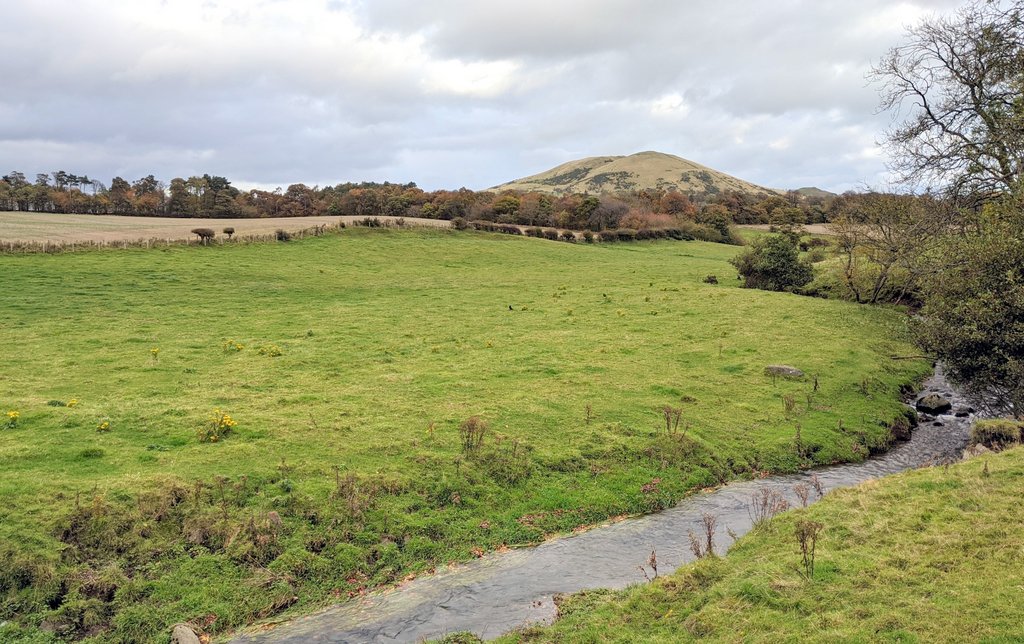
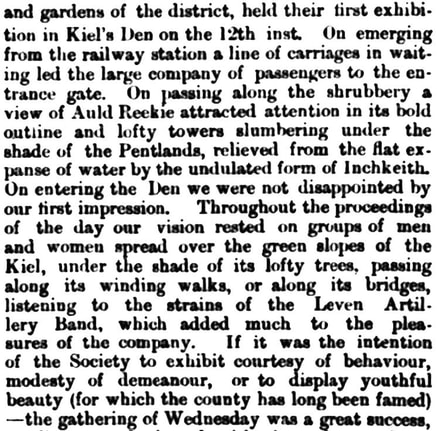

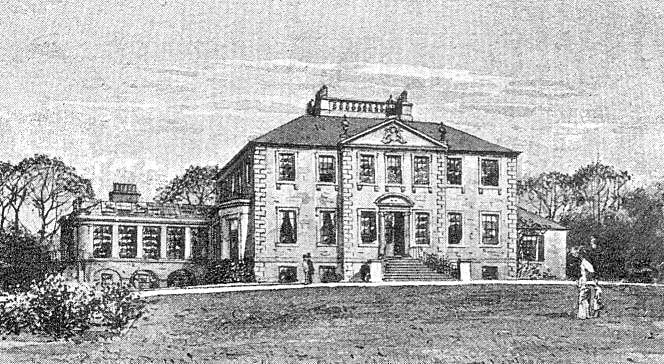
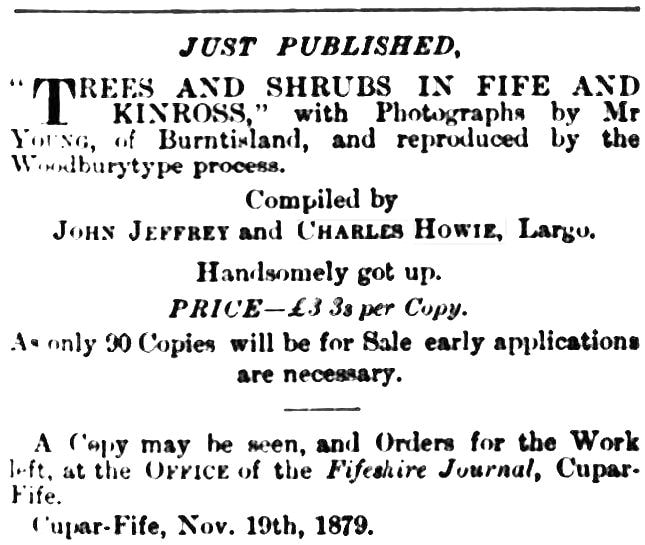
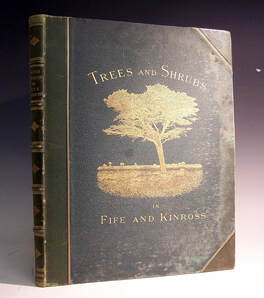
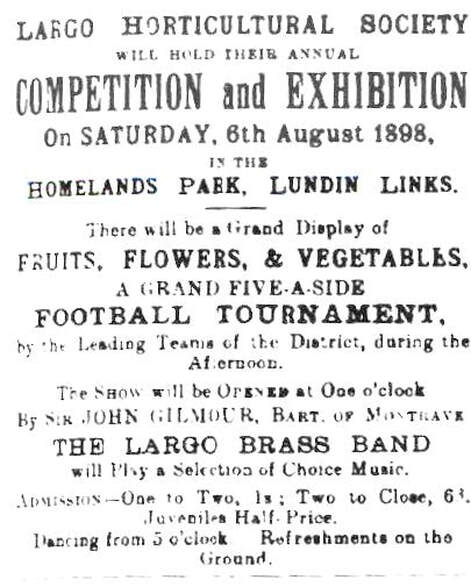


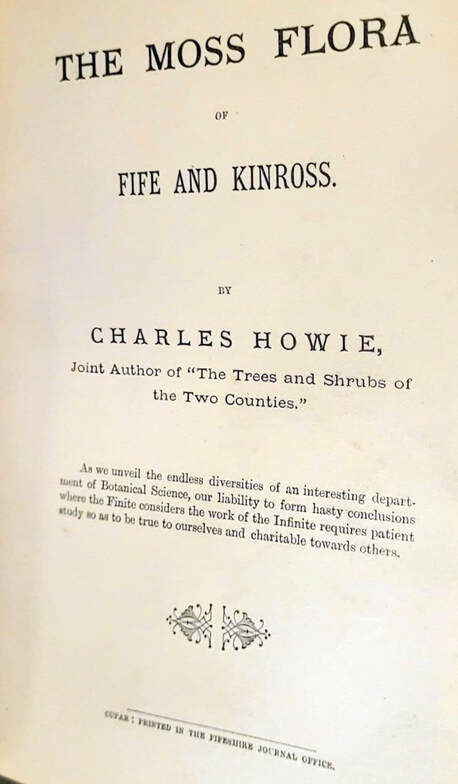
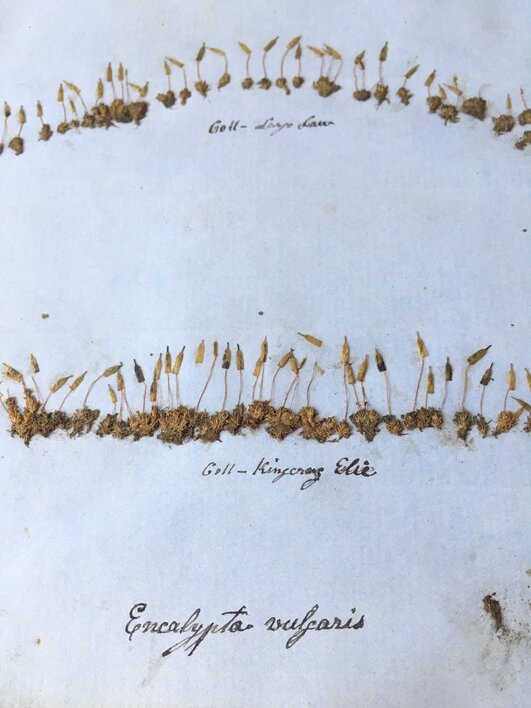

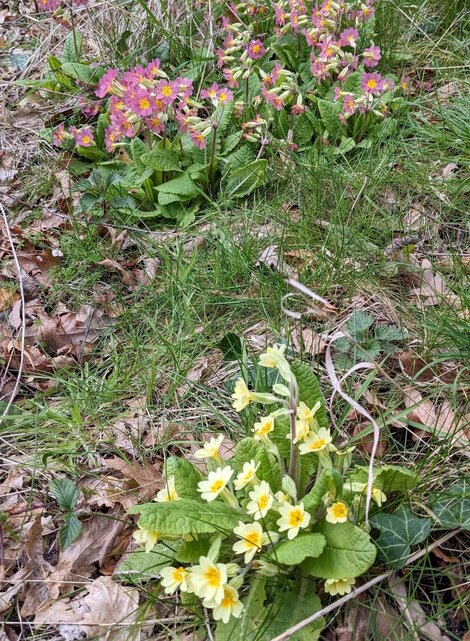


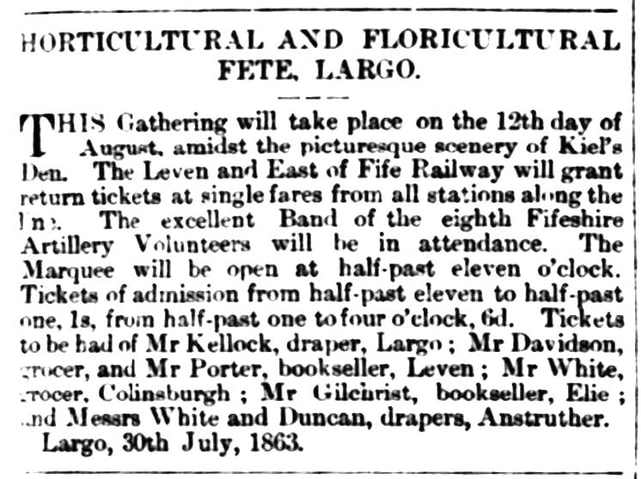
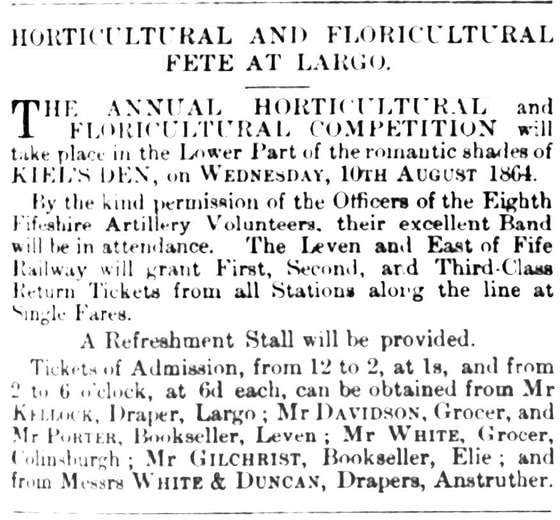
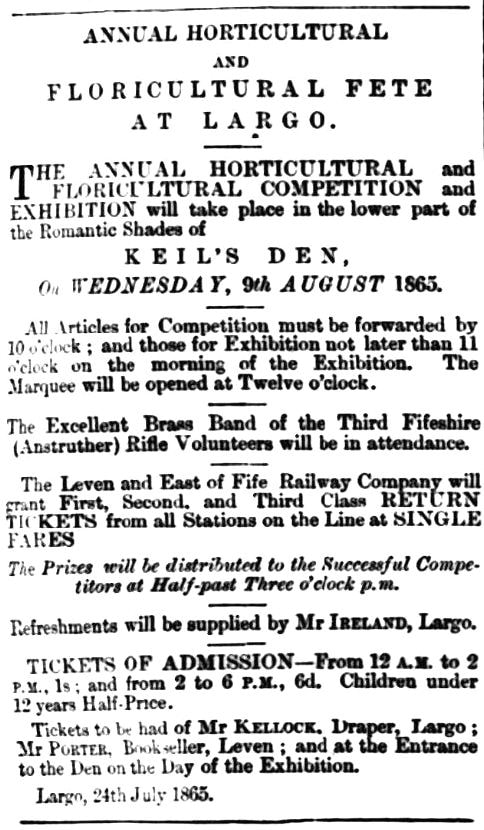
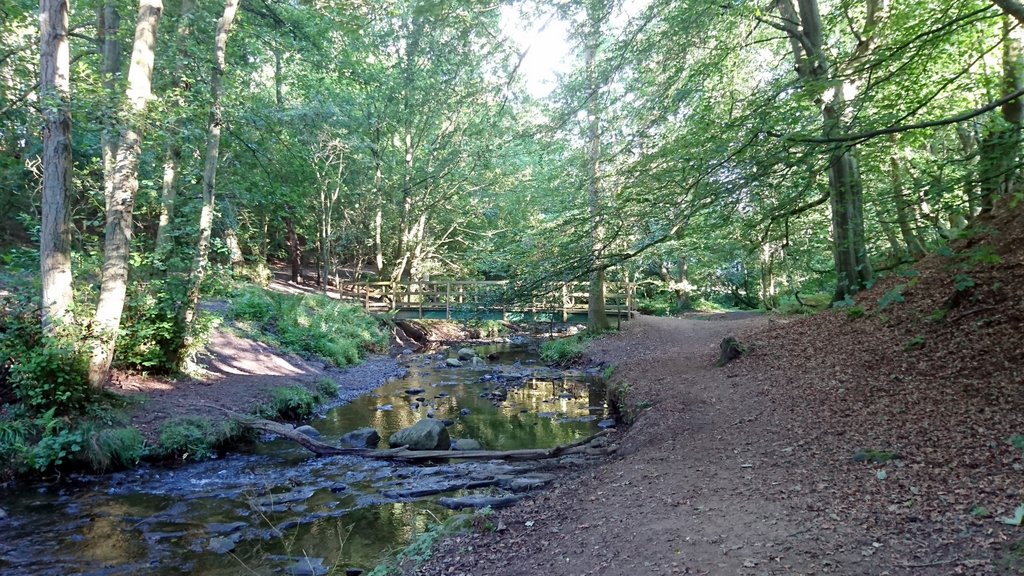
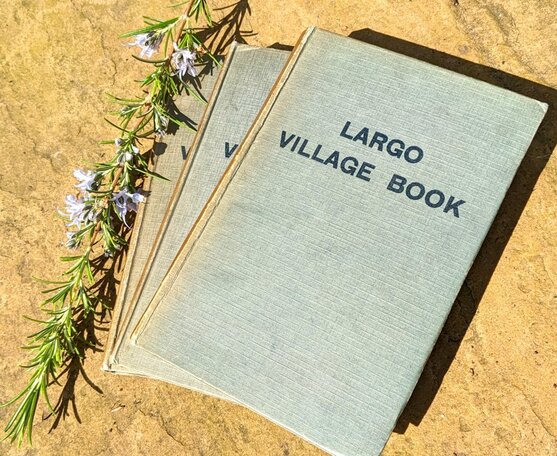

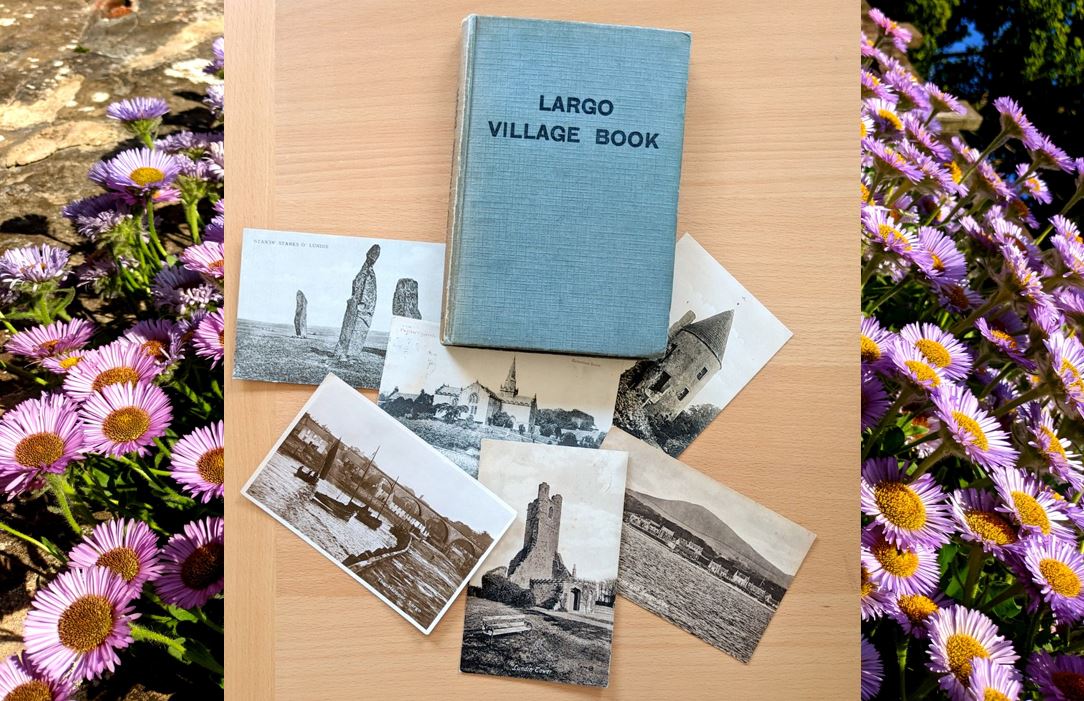
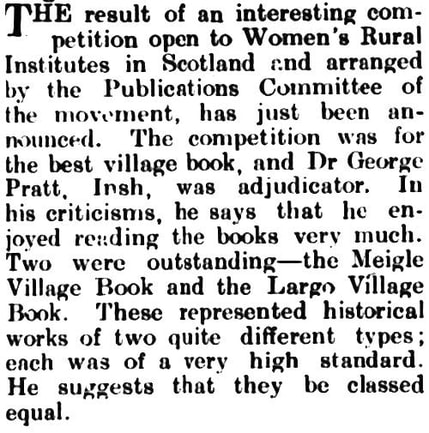


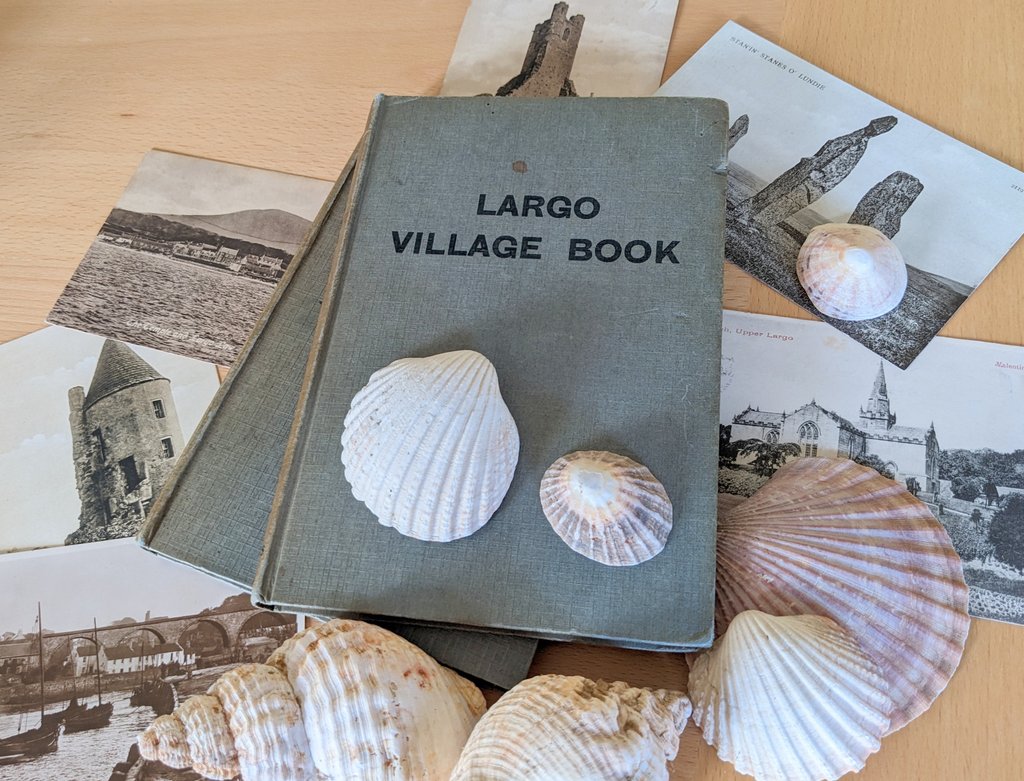
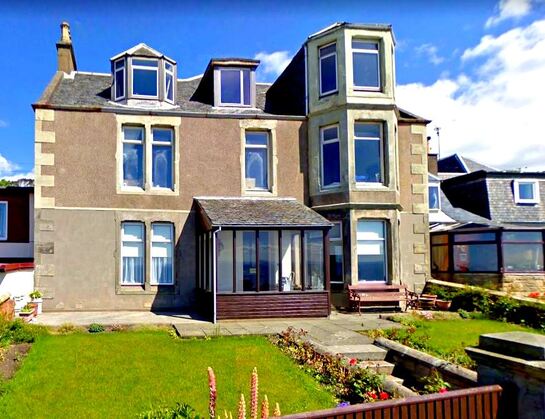

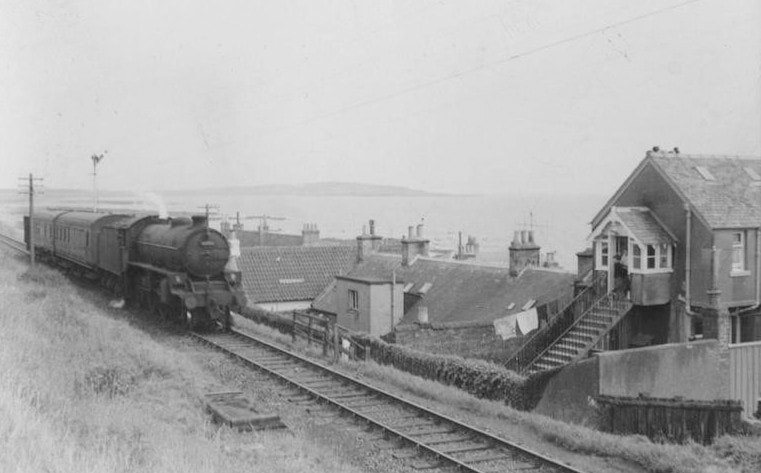
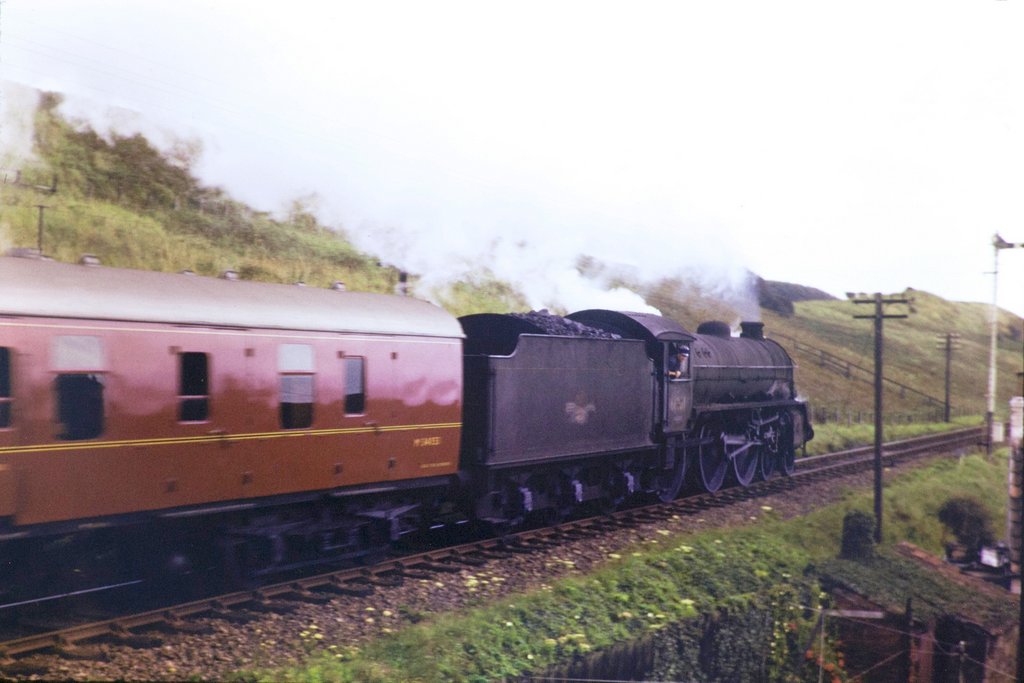
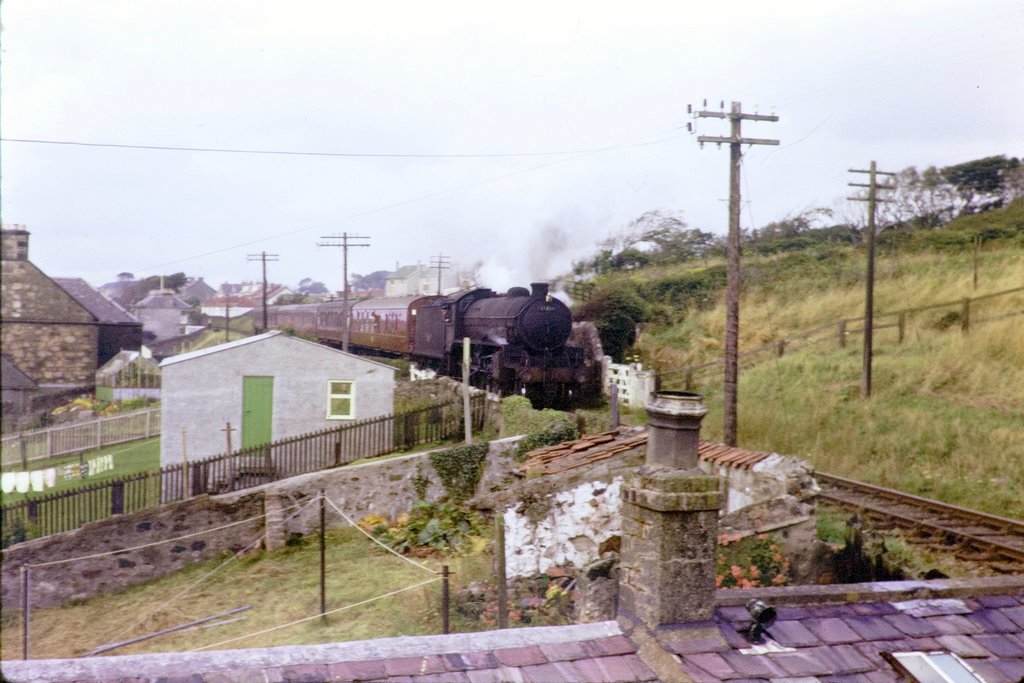
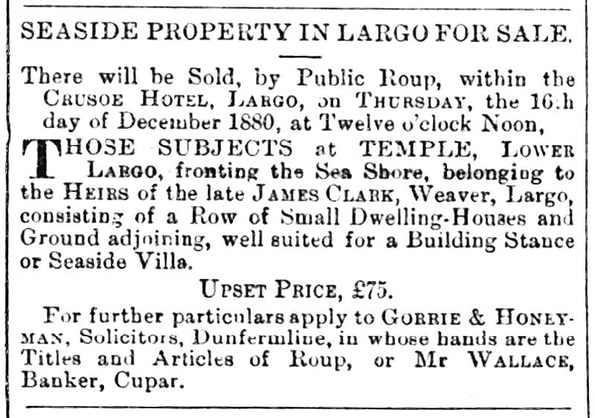

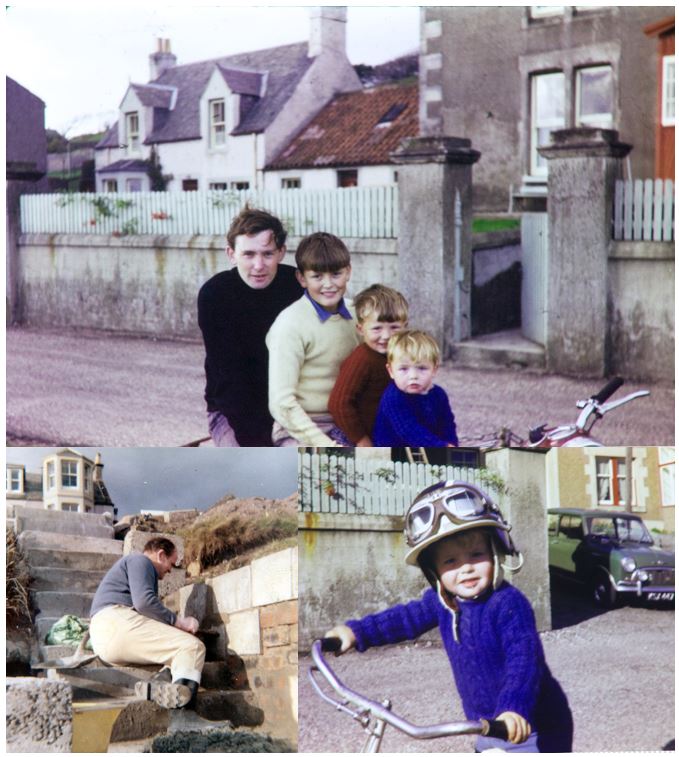
 RSS Feed
RSS Feed
